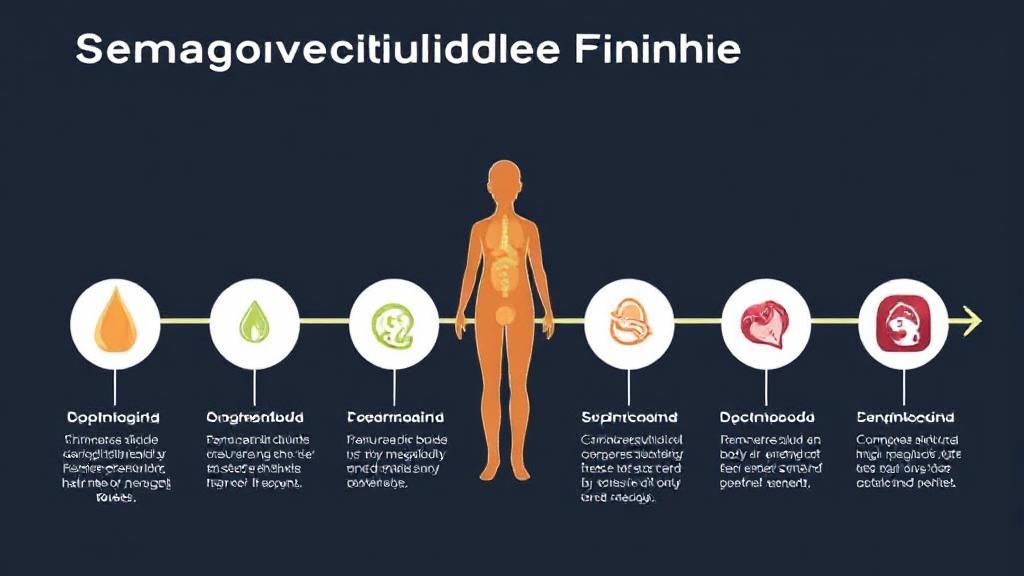Introduction to Semaglutide
Semaglutide is a medication that has gained significant attention for its effectiveness in managing type 2 diabetes and aiding in weight loss. As a glucagon-like peptide-1 (GLP-1) receptor agonist, it works by mimicking the effects of the GLP-1 hormone, which plays a crucial role in regulating blood sugar levels and appetite.
How Semaglutide Works
Semaglutide functions by stimulating insulin secretion, decreasing glucagon secretion, and delaying gastric emptying. This multifaceted approach helps maintain better glycemic control and promotes weight loss, making it valuable for individuals struggling with obesity and diabetes.
Timeline for Effectiveness
Initial Phase (Weeks 1-4)
During the first month, patients typically begin with a low dose of 0.25mg to help the body adjust and minimize side effects. Common early experiences include:
- Reduced appetite
- Earlier satiety during meals
- Decreased cravings
- Potential mild nausea or digestive issues
- Initial improvements in blood sugar levels
Early Progress Phase (Weeks 5-8)
As dosage increases to 0.5mg, patients start seeing measurable results:
- Average weight loss of 2-4 pounds per month
- Improved portion control
- More consistent eating patterns
- Better blood sugar control
Steady Progress Phase (Months 3-6)
During this crucial period, patients typically reach therapeutic doses (1.0-2.4mg), leading to more substantial results:
- Average weight loss of 5-10% of initial body weight
- Improved metabolic markers
- Better energy levels
- Reduced inflammation
"Clinical trials show that patients taking semaglutide lost an average of 15% of their body weight over 68 weeks, with some losing up to 20%." - New England Journal of Medicine
Factors Influencing Effectiveness
Several factors can impact how quickly and effectively semaglutide works:
| Factor | Impact |
|---|---|
| Starting weight | Higher BMI may see faster initial results |
| Diet adherence | Crucial for optimal outcomes |
| Physical activity | Enhances medication effectiveness |
| Stress levels | Can affect weight loss progress |
| Sleep quality | Influences hormonal balance |
Maximizing Effectiveness
Lifestyle Modifications
- Implement a balanced, calorie-appropriate diet
- Maintain regular exercise routine
- Practice stress management
- Ensure adequate sleep
- Stay hydrated
Medical Monitoring
Regular check-ups help ensure:
- Appropriate dosing
- Management of side effects
- Progress tracking
- Adjustment of treatment plan
Important Considerations
It's essential to remember that semaglutide is not a quick fix but rather a tool to support sustainable weight loss. Success requires:
- Patience with the gradual dose escalation
- Commitment to lifestyle changes
- Regular medical supervision
- Realistic expectations
- Long-term dedication to maintenance
For more detailed information, consider visiting resources like the American Diabetes Association, the Centers for Disease Control and Prevention, or the FDA's official resource page.
Potential Plateaus
Weight loss may not be linear, and plateaus are normal. During these periods, focus on:
- Non-scale victories
- Body composition changes
- Health improvements
- Habit maintenance
Remember that individual results may vary, and working closely with healthcare providers ensures the safest and most effective treatment journey.
